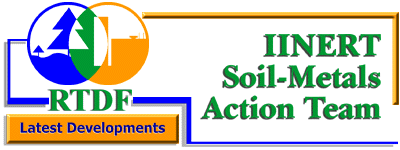 |
||||||||
 |
||||||||
![]()
![]()
|
IINERT technologies chemically and physically inactivate hazardous metals found in contaminated soils by reducing and essentially eliminating their solubility and bioavailability without the need for excavating the soil. In situ incorporation of chemicals such as phosphates, mineral fertilizers, iron oxyhydroxides, other minerals, biosolids, or limestone changes the molecular species of the metals. Changing a metal's molecular species may reduce its water solubility, bioavailability, and potential toxicity to humans and the environment. However, the total concentration of the metals may not necessarily change. The chemicals used for inactivation also may increase the fertility of the soil and eliminate any toxicities to plants and soil organisms. Growing a plant cover physically stabilizes the soil and its contaminants in place, which, in turn, minimizes soil erosion and the transport of soil-metals. Incorporating amendments and growing plants are more natural methods for restoring soil ecology compared to other techniques. Of the treatment options available for remediating metals-contaminated soils, in-place inactivation appears to be the most cost-effective. Additionally, it reduces the hazard posed by the contaminated soil in place. Since burying contaminated soil in a landfill or covering it over is not necessary, the potential for degradation and contamination of other areas is minimized.
|